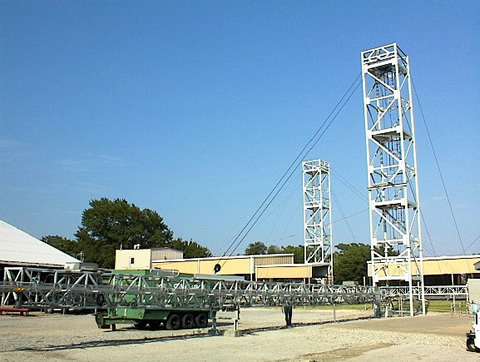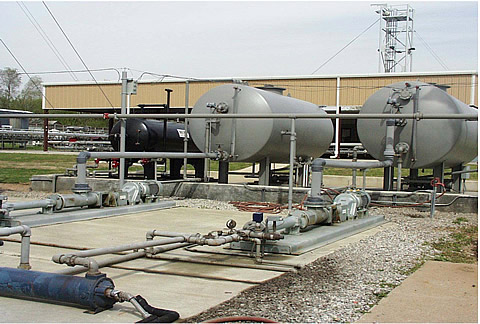The developments of fields in deep and ultradeep (5,000 ft and more) waters are becoming more common. It is inevitable that production systems will operate under multiphase flow conditions (simultaneous flow of gas-oil-and water possibly along with sand, hydrates, and waxes). Recovery of resources from deep water poses special challenges and requires accurate multi-phase-flow predictive tools for several applications, including the design and diagnostics of the production systems, separation of phases in horizontal wells, and multiphase separation. The available tools cannot properly account for the three-phase flow. At best, they lump oil and water phases as a single liquid phase, assuming homogeneous liquid flow. Therefore, the development of revolutionary next-generation multiphase flow predictive tools is needed.
The deliverables of this project—better understanding of gas-oil-water flows, and a novel model—are expected to have significant potential for facilitating better practices in every aspect of offshore oil and gas production operations. This includes horizontal well flow, miniaturization, separation, fluid flow characterization, and flow-assurance issues, since all depend on the accurate characterization of three-phase gas-oil-water flow in pipes.
Results
A three-phase unified model has been developed. The unified model can be used for the prediction of flow behavior during production and transportation of gas, oil, and water through wellbores and pipelines at different inclination angles. The phase distributions and hydrodynamics are described based on two criteria: gas-liquid flow pattern and oil-water mixing status. Closure relationships describing the distribution between the liquid phases have been proposed. Validations have been carried out by comparisons with experimental observations of oil-water mixing and measurements of pressure gradients for oil-water and gas-oil-water pipe flows corresponding to different flow patterns. Significant improvements are observed over the predictions by the two-phase unified models that assume a fully mixed liquid phase.
Benefits
The novel software tool developed in this project helps design proper production and transportation systems. There are many impacts of the new tool being developed. For the industry, it is imperative to have accurate predictive tools for the production and transportation of hydrocarbons and associated water. The lost production from a single offshore pipeline due to inadequate design can cost a half million dollars or more per day. More importantly, the lack of technology can result in overly conservative designs that can render some projects cost-prohibitive. Any technological improvement geared toward increases in producible reserves and efficient production practices, such as the novel software developed in this project, will realize more hydrocarbon production and increase U.S. employment. Moreover, the new technologies may give U.S. companies a technological advantage to exploit similar fields or technical services in other countries, which may create more job opportunities for U.S. residents. For the public at large, the availability of additional domestic hydrocarbon reserves will reduce the dependency of the United States on hydrocarbon imports, which will bring more stability to U.S. energy markets and the U.S. economy as a whole.
Summary
Thorough literature reviews on gas-oil-water three-phase pipe flow were conducted. A three-phase data bank has been developed. The three-phase data bank was used to evaluate the previous gas-liquid two-phase models by assuming a fully mixed liquid phase. It was found that the highest discrepancies correspond to the three-phase pipe flows with stratified oil and water.
A unified model has been developed for the prediction of flow behavior during production and transportation of gas, oil, and water through wellbores and pipelines. Closure relationships describing the distribution between the liquid phases—namely mixing and inversion—are proposed. Significant improvements are observed over the predictions by the two-phase unified models that assume a fully mixed liquid phase. The three-phase unified model is currently being enhanced by improving the closure relationships.
Gas-oil-water tests have been conducted for horizontal pipe at various flow rates and water cuts. The pressure gradient, gas-oil-water holdups, slug characteristics, and mixing status of oil and water are measured or observed. The experimental results are used to validate the new unified model and to improve or develop new closure relationships for the unified model.
An experimental study for horizontal pipes has been completed to investigate the oil and water mixing at different flow rates using a high-speed and high-resolution video system with imaging processing software to provide the unified model with an important closure relationship. This study helped identify the mixing status between oil and water along with the observations of droplet size and distribution. View pictures of oil-water flow pattern samples. [PDF-177KB]
An experimental study for inclined pipes has been completed to investigate the oil-water flow mixing at different flow rates using a high speed and high-resolution video system with image processing software. The inclination angles covered were ±1, ±2, and -5°. The results are used to develop closure relationships and to test the developed unified model.





